The Royal Navy Exhibition of 1891
The Royal Navy was to attain enormous popularity in Britain in the 19th Century, especially in its last decades. It was seen to be at the cutting edge of the technology of the time and to be the guarantor of imperial greatness against the machinations of the French, Russians and any other potential enemies, real or imagined. The main fleets in the Channel and the Mediterranean represented the most majestic concentrations of power afloat, dozens of cruisers and gunboats protected British commerce and interests in every part of the globe, and the navy was pre-eminent in charting the world’s oceans and coastlines and in creating the science of oceanography.

The Navy’s popularity was seized on for use by commercial interests. When HMS Swallow was quarantined outside Montevideo in 1889, due to a yellow-fever outbreak, her captain was alleged to have sent to shore for three boxes of Beecham’s Plls (“worth a guinea a box“). This advertisment commemorates this by flag semaphore!
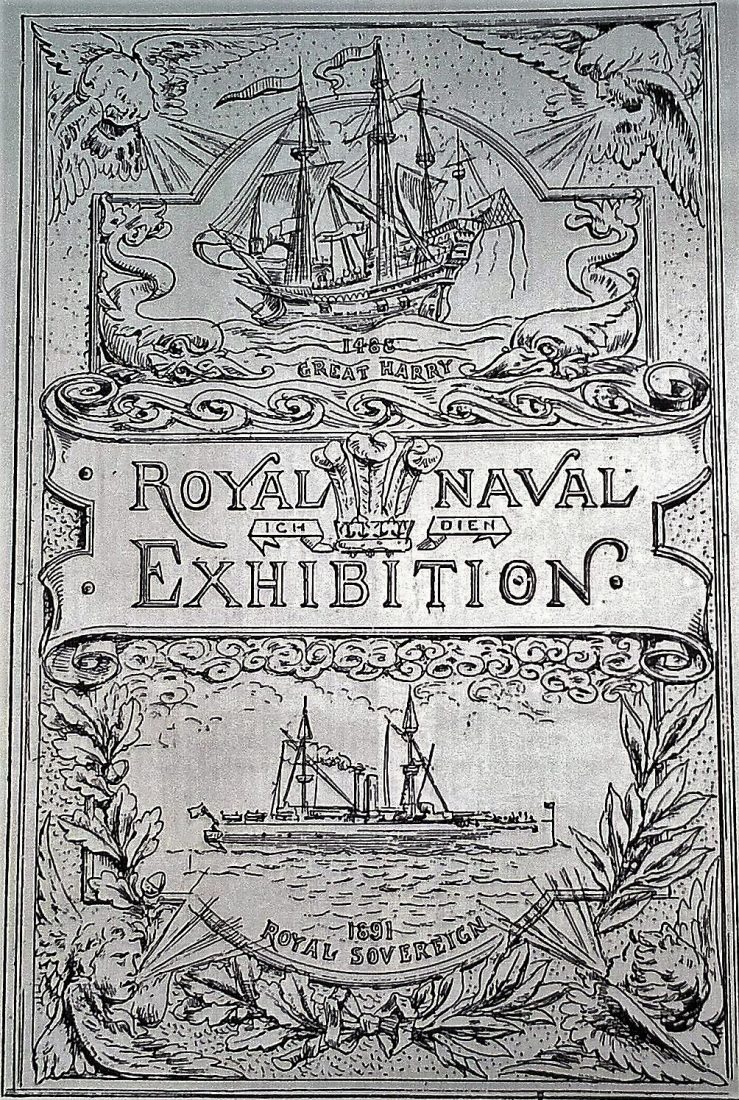 Pride in the navy crossed class boundaries and it was to cater for this that a spectacular exhibition was staged at the Royal Hospital grounds at Chelsea in 1891. Lasting some five months, the exhibition displayed paintings, models and memorabilia lent by private owners, as well as stands at which many of the main armament suppliers and ship builders displayed their wares. (See cover of the exhibition catalogue on the left)
Pride in the navy crossed class boundaries and it was to cater for this that a spectacular exhibition was staged at the Royal Hospital grounds at Chelsea in 1891. Lasting some five months, the exhibition displayed paintings, models and memorabilia lent by private owners, as well as stands at which many of the main armament suppliers and ship builders displayed their wares. (See cover of the exhibition catalogue on the left)
A large lake was constructed on which 25-ft models of the ironclads HMS Edinburgh and HMS Majestic blasted each other daily while smaller craft ran the gauntlet between two sea-forts, not unlike those in the approaches to Portsmouth harbour. These displays were immensely popular for their sound and fury.
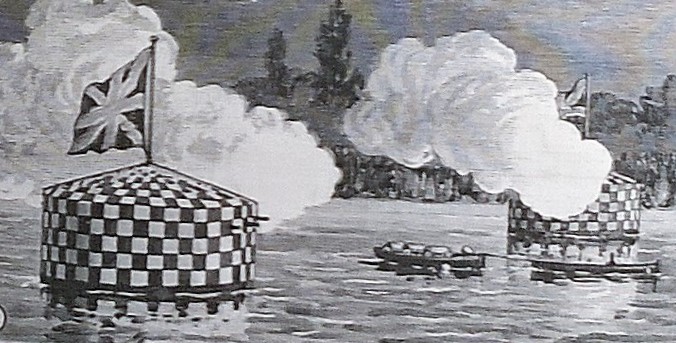
Small craft run the gauntlet between two sea-forts
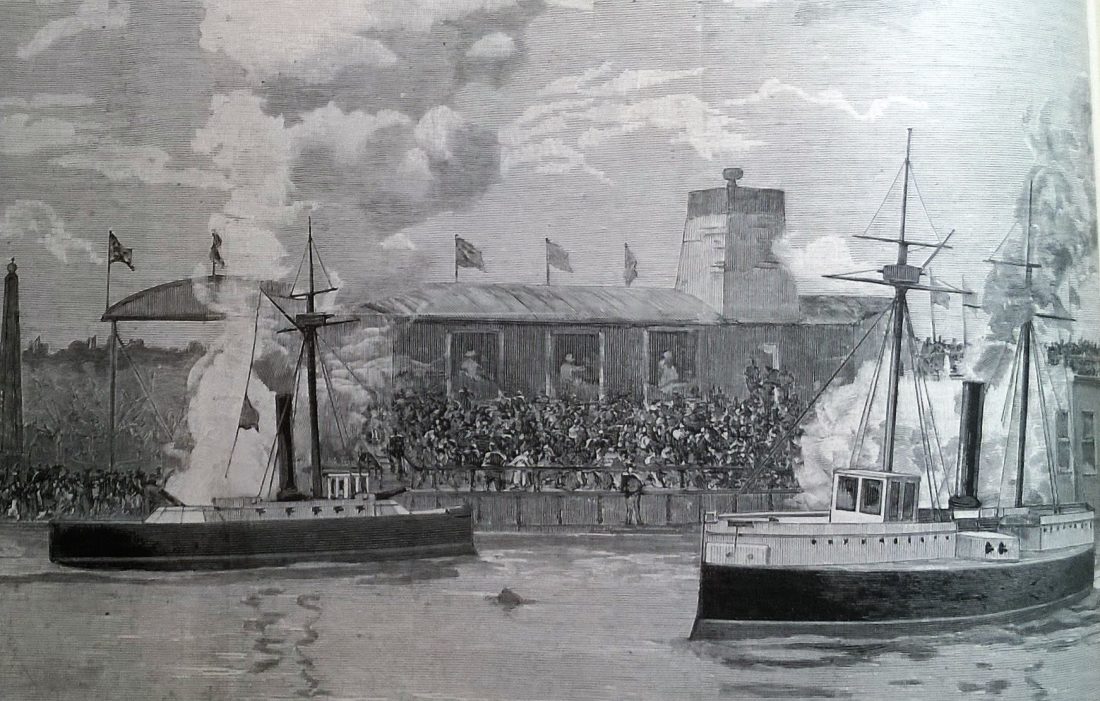
HMS Majestic versus HMS Edinburgh
A decade later these models might have been powered by electricity but in 1891 it was necessary to propel them by a hidden crew of sailors turning crankshafts to drive the propellers (reminiscent of the ill-fated CSS Hunley!). Also hidden for sight was a helmsman who had restricted vision though the pilot house. The “Battles” were unrealistic in the extreme, the models lying very close together, but this did not bother the crowds, who delighted in the rolling smoke and darting flames of the blanks fired. Night displays on the lake were particularly impressive, allowing demonstration of electric-arc searchlights, a novelty for the vast majority of the visitors.
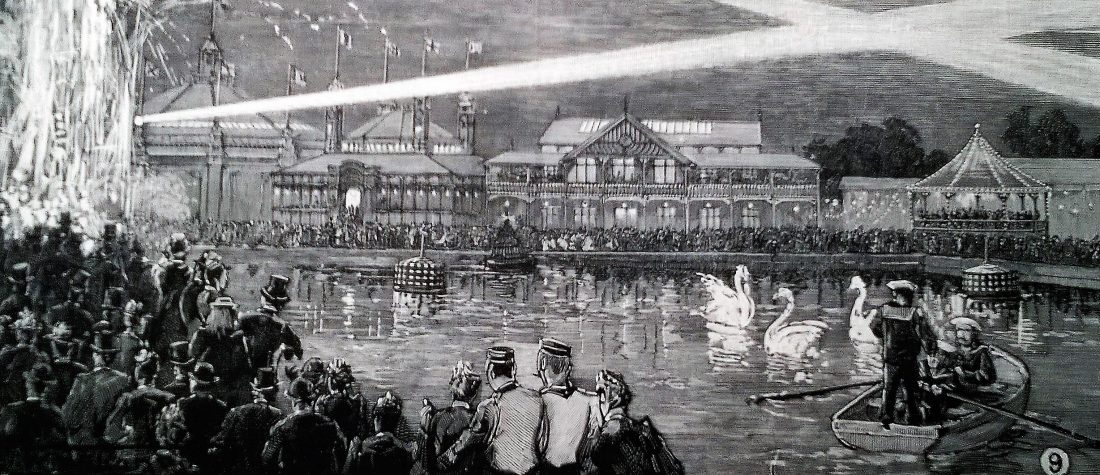
Night display on the lake – note searchlight and temporary exhibition halls in background
The fact that a large part of the navy’s duties in foreign parts was the landing of “naval brigades” – seamen and marines sent to fight ashore – was spectacularly demonstrated by running of field guns across an obstacle course. Most ships carried such weapons, which could be broken down into their components for manhandling and reassembled when needed to be brought into action. Such competitions are still held in today’s Royal Navy and are as spectacular today as they were in 1891.
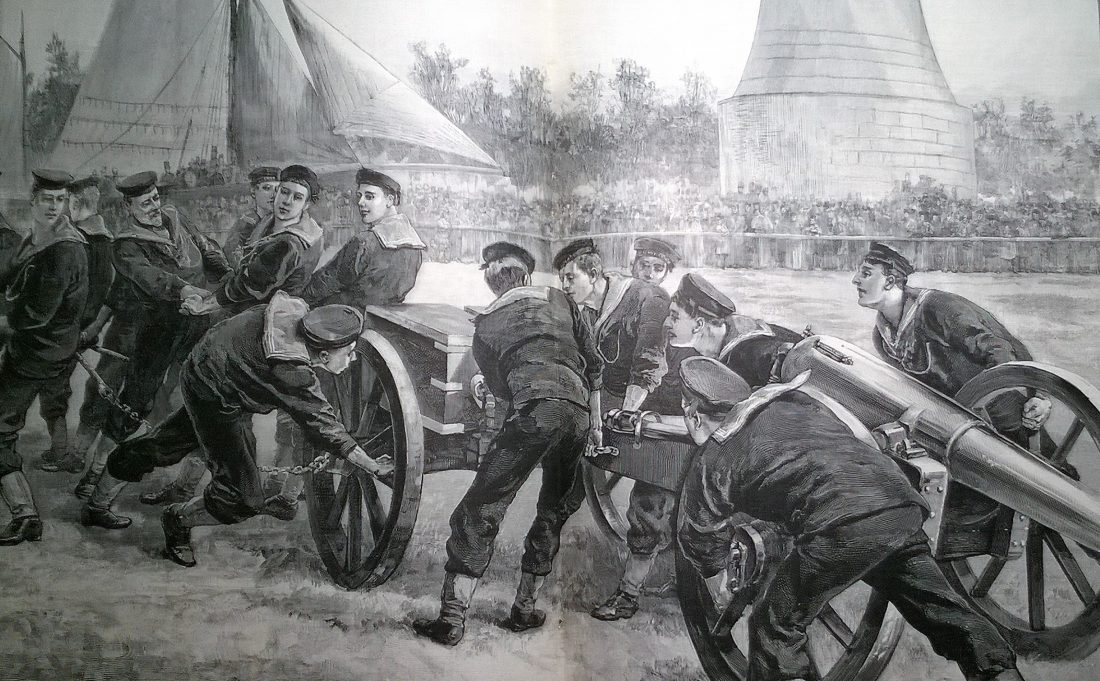
Field-gun run over obstacle course
The exhibition was strongly supported by Queen Victoria and her family, being opened by the Prince of Wales (later Edward VII) and his wife – who dis so by pressing a switch to light up a model of the Eddystone lighthouse. The exhibition was subsequently visited by the Queen herself, though judging by contemporary illustrations she seemed to have been pushed around it in a bath-chair.
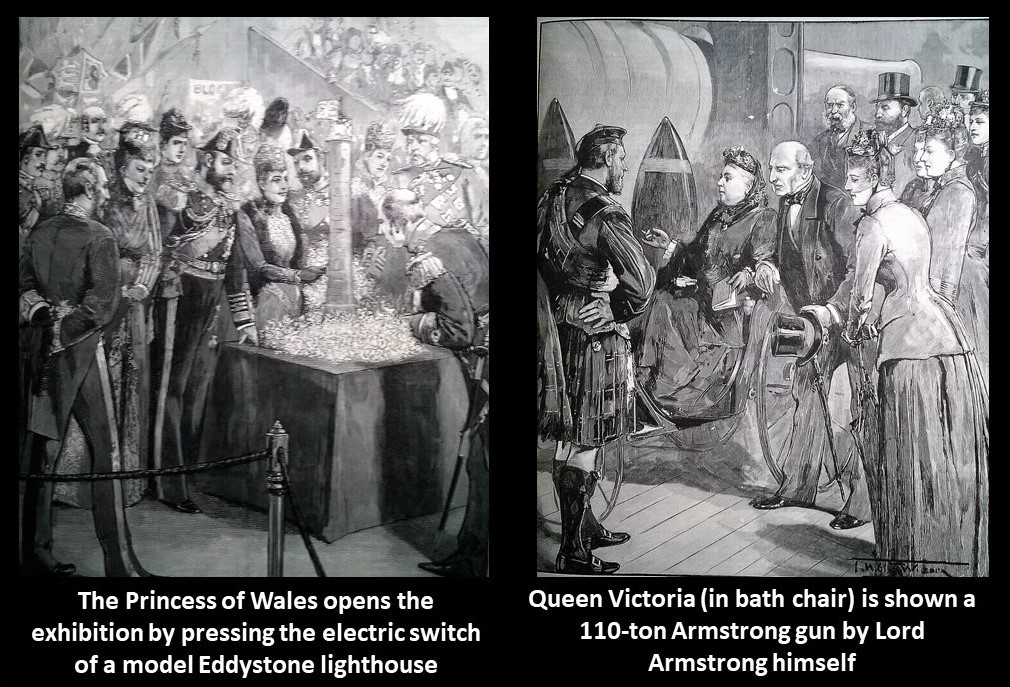

A bustled lady is also impressed by a 100-ton Armstrong gun in a cut-away turret
The exhibition was enthusiastically reported in the popular publications of the period – as the illustrations here show – and it drew enormous crowds. By the time it closed, after five successful months, it had attracted over 500,000 visitors and, after costs were covered, had raised some £50,000 pounds, equivalent to many millions today, for naval charities.
Britannia’s Spartan
The fourth novel of the Dawlish Chronicles can be read in sequence, or as a stand-alone
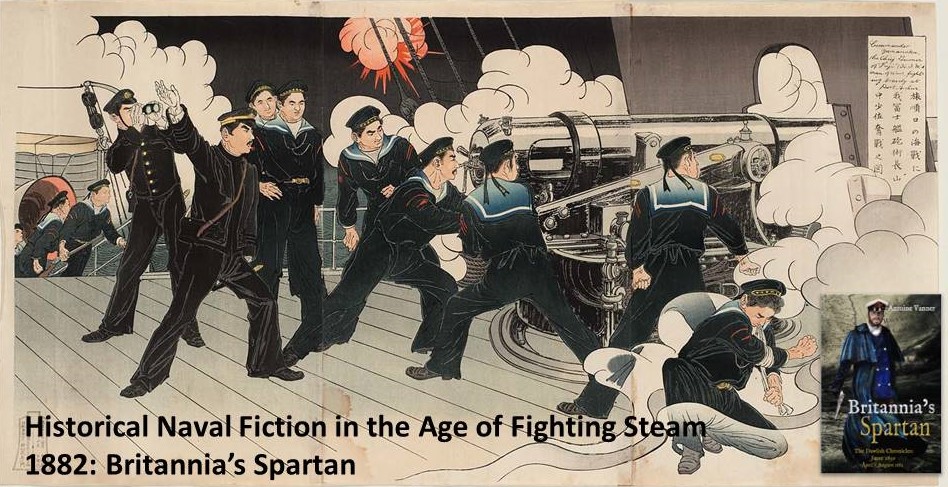 1882 and Captain Nicholas Dawlish RN has just taken command of the Royal Navy’s newest cruiser, HMS Leonidas. Her voyage to the Far East is to be a peaceful venture, a test of this innovative vessel’s engines and boilers.
1882 and Captain Nicholas Dawlish RN has just taken command of the Royal Navy’s newest cruiser, HMS Leonidas. Her voyage to the Far East is to be a peaceful venture, a test of this innovative vessel’s engines and boilers.
Dawlish has no forewarning of the nightmare of riot, treachery, massacre and battle he and his crew will encounter.
A new balance of power is emerging in the Far East. Imperial China, weak and corrupt, is challenged by a rapidly modernising Japan, while Russia threatens from the north. They all need to control Korea, a kingdom frozen in time and reluctant to emerge from centuries of isolation.
Dawlish finds himself a critical player in a complex political powder keg. He must take account of a weak Korean king and his shrewd queen, of murderous palace intrigue, of a powerbroker who seems more American than Chinese and a Japanese naval captain whom he will come to despise and admire in equal measure. And he will have no one to turn to for guidance…
Britannia’s Spartan sees Dawlish drawn into desperate battles on sea and land. Daring and initiative have already brought him rapid advancement and he hungers for more. But is he at last out of his depth?
Click here, or on the image above, to read the opening chapters free
Click below for more details of hard copy and Kindle editions:
For Britain
For United States, Canada and elsewhere
Click here to download four free Dawlish Chronicles Short Stories
Registering for the Dawlish Chronicles mailing list by clicking above will keep you updated on new books and facilitates e-mail contact between Antoine Vanner and his readers for discussion of issues arising.
Suggestions and comment are always welcome and all emails are replied to. Free short stories, available only to those on the list, will also be made available at intervals.

